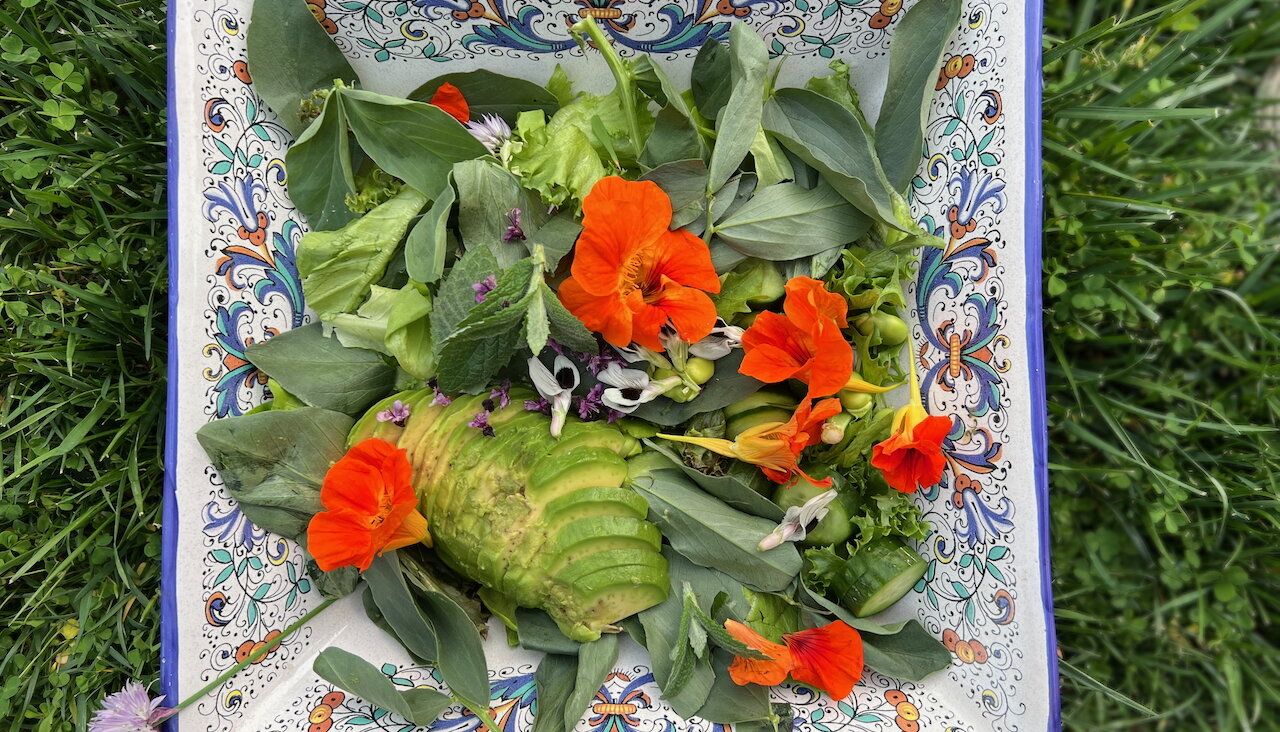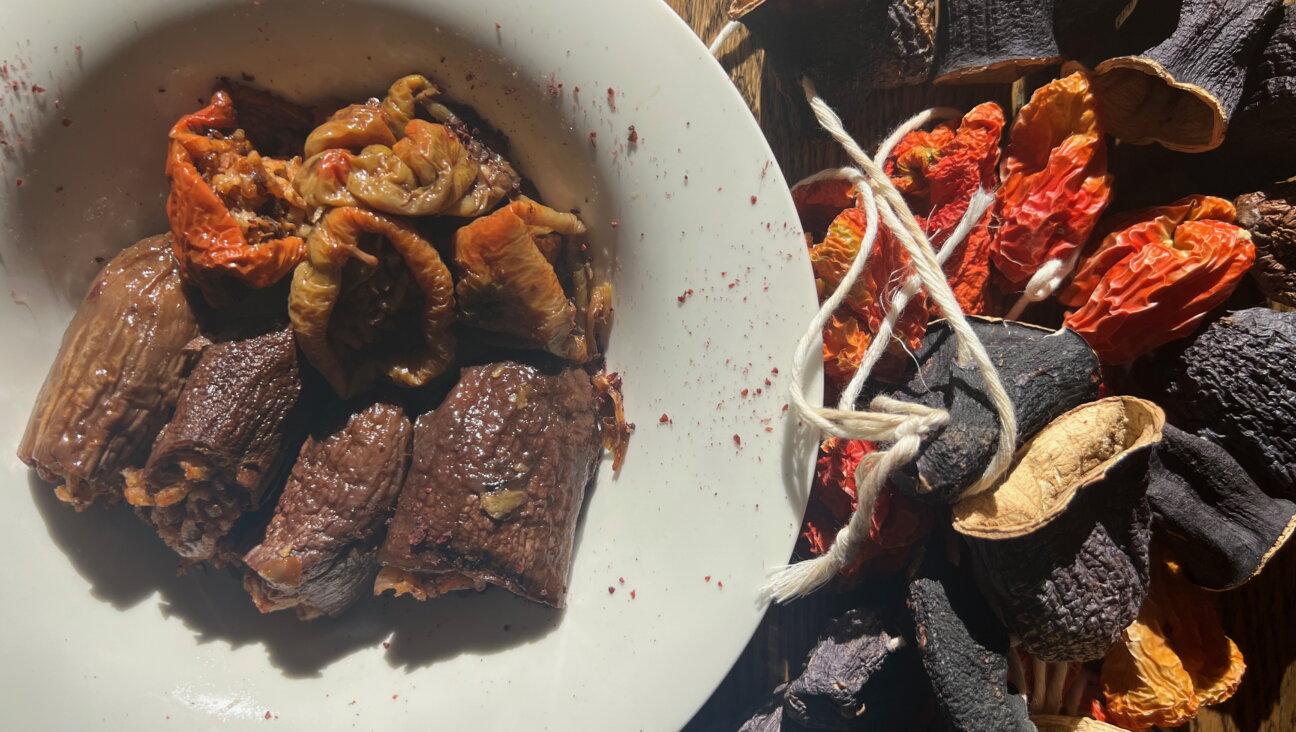Why I Do Not Buy Hummus

Image by wikimedia
I have been making hummus from scratch for nearly 10 years now. I don’t think it’s a big deal — it’s the easiest thing to make — but nearly everyone I talk to who knows this is shocked. How do I do it? When do I find the time? Isn’t it labor intensive? Why would I make my own when I could just buy Sabra? y answer: It’s not time consuming, it’s not labor intensive, and Sabra sucks.
There, I’ve said it. I eat Sabra hummus when it’s the only stuff available (the other stuff is just goyishe bean-dip as far as I’m concerned) but I otherwise find it revolting. Why? Because it tastes manufactured. It’s the heavy overtone of preservatives and acidity that ruins an otherwise half-way decent product. I know my preference flies in the face of many an American Jew (particularly on the East Coast — I forgive the West Coasters because I know there isn’t much out there in the first place — except in L.A. and then you have no excuse) but I stand by it. It’s better if you make it yourself. It’s fresher, it’s creamier, and it’s more flavorful.
I started making my own hummus in college after a rather nasty break-up with Oded. He and I are still very close and we have managed to take our heart-ache and turn it back into the close friendship it started out being. I am actually going to be presiding over his wedding this coming summer. I’m very happy for him. But the real reason I started making my own hummus was not because I really desperately needed hummus but because I wanted to start cooking differently. It was an excellent “starter” recipe to Israeli cooking. It is one of the recipes that got me beyond my Americana and Ashkenazi culinary habits and into something new and different. Something with flavor.
The recipe came from this Oded’s mother. The family was Israeli – including Oded – and clung to much of that culture despite being completely acclimated to America. Oded was pretty anti religion as a teenager and, other than dating a rather observant Jew, stuck to his guns. His father tended to feel similarly. His mother was mostly just happy Oded had brought home a nice Jewish girl. As such, I had a special connection with her. We talked about family, about school (Oded and I were seniors in high school together), and about being women. And that inevitably morphed into food and cooking. She wasn’t a particularly adventurous chef but she did make a mean hummus and I was just beginning to learn how to cook. She gave me a recipe that I could easily follow: canned chickpeas, garlic, lemon juice, olive oil, and good tehina – zeh hoo. Throw together in a food processor and viola – hummus.
I didn’t try this my first year of college for the obvious reason that a food processor or even a blender in my freshman dorm would have simply been unacceptable. However, once I moved into an apartment with three other girls – two of whom were already skilled chefs in their own right – I began to experiment. With their encouragement and knowledge of spices and herbs, I began to see beyond kugel and the boiled chicken I grew up with. They loved the hummus and pushed me to experiment. Through our collective pallets, I came up with the following adaptation.
Hummus
Add into the food processor in the following order
1) 1 can of chickpeas, drained
2) ¼ cup tehina, stirred well (make sure to get an Israeli or elsewhere Middle East brand as the quality is invariably better than the American brands)
3) 1 lemon, juiced
4) 2-3 larger garlic cloves, briefly chopped
5) Dash of salt (I prefer a larger dash than smaller)
Press the “on” switch and add about 2 tbsp of olive oil (or more as needed) as it processes to achieve a smooth texture. Stop after about two or three minutes and taste – add more salt, tehina, oil, or lemon juice as desired (never water) – or put in additives. My favorites are basil (which creates a hummus pesto – and I made it before Sabra ever did), za’atar, and spicy paprika (but not all together). Continue to process for another minute to ensure that additives are thoroughly mixed in.
Now that I live in New York City, I am surrounded by hummus. The stuff at the Hummus Kitchen and Hummus Place is my favorite but, of course, it is home-made and fresh. I make my own hummus nearly every week for Shabbat (only because it makes it special) and it is always gone by Sunday afternoon. My guests are consistently impressed by it and I am flattered – and keep on repeating how easy it is to make. And yet they never do.
Rebecca is a high school English teacher in the New York City public schools. She is enjoys experimenting with multi-cultural cuisine, practicing Tae Kwon Do, and reading well-written essays from her students.
The Forward is free to read, but it isn’t free to produce

I hope you appreciated this article. Before you go, I’d like to ask you to please support the Forward.
Now more than ever, American Jews need independent news they can trust, with reporting driven by truth, not ideology. We serve you, not any ideological agenda.
At a time when other newsrooms are closing or cutting back, the Forward has removed its paywall and invested additional resources to report on the ground from Israel and around the U.S. on the impact of the war, rising antisemitism and polarized discourse.
This is a great time to support independent Jewish journalism you rely on. Make a gift today!
— Rachel Fishman Feddersen, Publisher and CEO
Support our mission to tell the Jewish story fully and fairly.
Most Popular
- 1

Fast Forward Ye debuts ‘Heil Hitler’ music video that includes a sample of a Hitler speech
- 2

Opinion It looks like Israel totally underestimated Trump
- 3

Culture Cardinals are Catholic, not Jewish — so why do they all wear yarmulkes?
- 4

Fast Forward Student suspended for ‘F— the Jews’ video defends himself on antisemitic podcast
In Case You Missed It
-

Culture Should Diaspora Jews be buried in Israel? A rabbi responds
-

Fast Forward In first Sunday address, Pope Leo XIV calls for ceasefire in Gaza, release of hostages
-

Fast Forward Huckabee denies rift between Netanyahu and Trump as US actions in Middle East appear to leave out Israel
-

Fast Forward Federal security grants to synagogues are resuming after two-month Trump freeze
-
Shop the Forward Store
100% of profits support our journalism
Republish This Story
Please read before republishing
We’re happy to make this story available to republish for free, unless it originated with JTA, Haaretz or another publication (as indicated on the article) and as long as you follow our guidelines.
You must comply with the following:
- Credit the Forward
- Retain our pixel
- Preserve our canonical link in Google search
- Add a noindex tag in Google search
See our full guidelines for more information, and this guide for detail about canonical URLs.
To republish, copy the HTML by clicking on the yellow button to the right; it includes our tracking pixel, all paragraph styles and hyperlinks, the author byline and credit to the Forward. It does not include images; to avoid copyright violations, you must add them manually, following our guidelines. Please email us at [email protected], subject line “republish,” with any questions or to let us know what stories you’re picking up.















